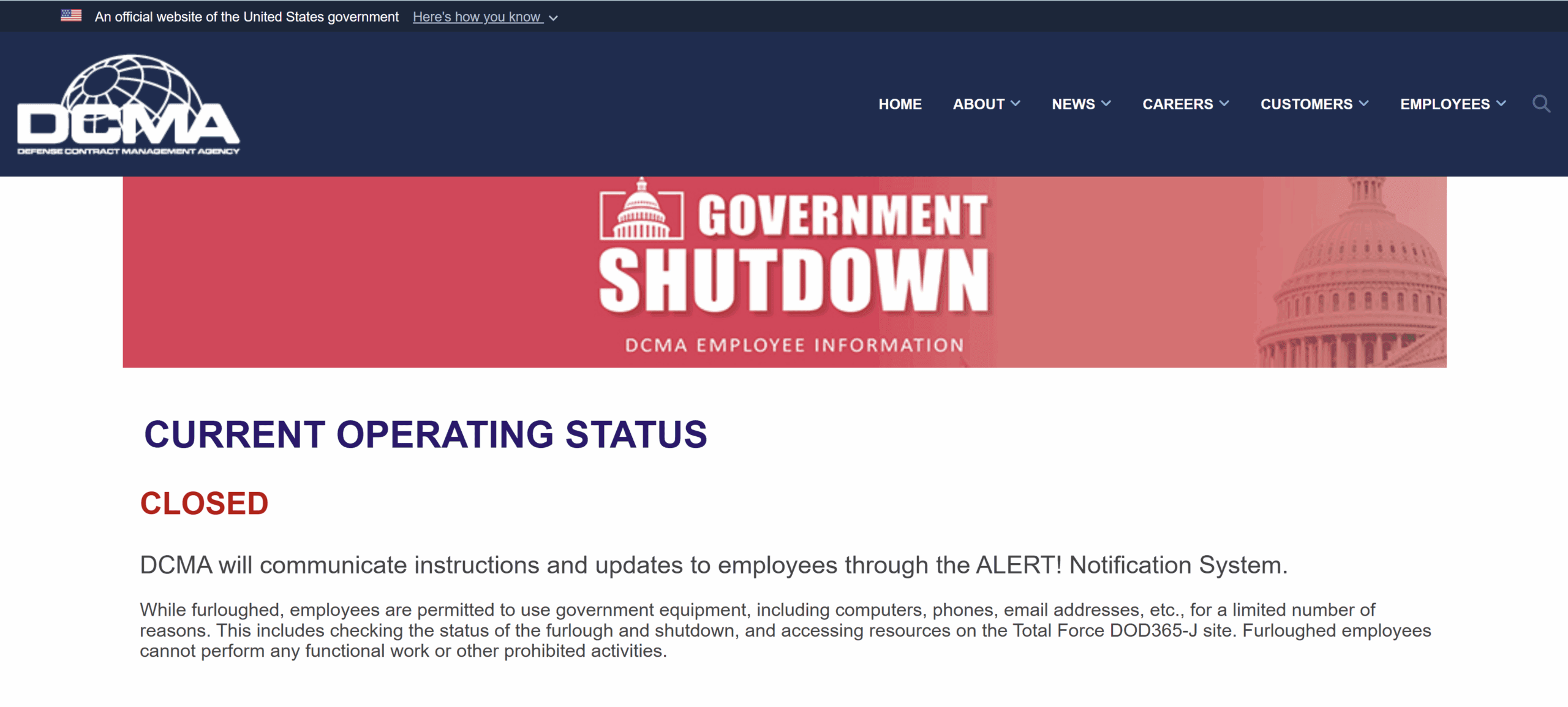Understanding the Current Shutdown
The 2025 United States federal government shutdown began on October 1, 2025, following the expiration of the Full-Year Continuing Appropriations and Extensions Act, 2025.
As of today, it has lasted 36 days, making it the longest government shutdown on record.
Estimates indicate that between 700,000 and 900,000 federal employees have been furloughed.
The Department of Defense (DoD) remains partially operational, but contracting, acquisition, and administrative activities have been significantly disrupted. This article explains how the shutdown is affecting DoD contractors and provides actionable steps to reduce exposure to risk.
What’s Happening
Because Congress has not yet approved new funding or a continuing resolution, agencies are restricted under the Antideficiency Act, which prohibits federal entities from obligating funds without appropriations.
For the DoD, this means:
- Existing contracts with obligated funds continue. Work on fully funded projects may proceed. If money was already set aside for the contract before October 1, performance is typically allowed to continue.
- New contract awards and modifications requiring new funds are paused. Contracting officers cannot issue new awards, modifications, or task orders that obligate unapproved funds.
- Administrative and oversight functions are slowed. Many civilian contracting officers, program managers, and financial personnel are furloughed, creating delays in communication, invoicing, and facility access.
- Payments are delayed. Even when work is authorized, the government generally cannot disburse payments until appropriations are restored.
- CMMC and DFARS obligations remain in effect. The CMMC 2.0 final rule, published on September 10, 2025, will still take effect on November 10, 2025. Contractors must continue preparing for compliance regardless of the shutdown.
The Real-World Impact
- Award delays: New solicitations and pending awards are postponed until Congress authorizes funding.
- Slower decision-making: Limited staff means longer turnaround times for contract modifications and extensions.
- Pipeline disruption: Contractors tracking open solicitations on SAM.gov should anticipate reissuances or revised deadlines.
- Payment interruptions: Even “excepted” work can face delayed disbursement once obligated funds are exhausted.
- Compliance pressure: With the CMMC rule approaching enforcement, contractors must balance compliance readiness against temporary funding uncertainty.
How DoD Contractors Can Mitigate Risk
1. Confirm funding status.
Review each contract to determine whether funds were obligated before the shutdown. Fully funded contracts can typically continue; incrementally funded ones face higher risk of pause.
2. Maintain documentation.
Keep detailed records of communications, directives, and any government-issued stop-work notices. Documentation protects against disputes once operations resume.
3. Manage cash flow proactively.
Expect payment delays and consider contingency financing or cost adjustments to maintain stability.
4. Continue CMMC preparation.
Shutdown or not, compliance deadlines remain firm. Update your System Security Plan (SSP), validate evidence, and ensure your SPRS score is accurate.
5. Communicate with partners and primes.
Coordinate expectations about delays and funding changes. Open dialogue now prevents misalignment later.
6. Monitor official updates.
Rely on the DoD, Office of Management and Budget (OMB), and Defense Contract Management Agency (DCMA) for verified information. Avoid unconfirmed reports and online speculation.
Strategic Perspective
While this shutdown is disruptive, it is temporary. The DoD’s mission and long-term procurement needs remain unchanged. When Congress restores funding, contracting offices will move quickly to clear backlogs and issue delayed awards.
Contractors who remain financially stable, cyber-compliant, and operationally ready will be positioned to capture opportunities once appropriations return.
Use this time strategically—refine internal processes, review compliance documentation, and strengthen cybersecurity. Preparedness now is the foundation for resilience later.
Stay Informed
We continue to track verified developments affecting CMMC implementation, DFARS enforcement, and DoD contracting operations throughout the shutdown. Subscribe to our daily CMMC and DoD Contractor Digest for concise updates on policy, procurement, and compliance readiness.
*As of September 5 2025 the Department of Defense is using the domain war.gov and adopting the secondary title ‘Department of War’. Legal name changes are still pending congressional action.
Last verified and updated: November 5, 2025


